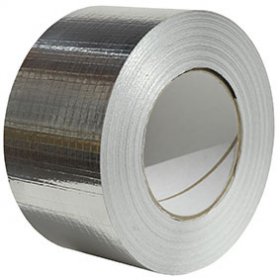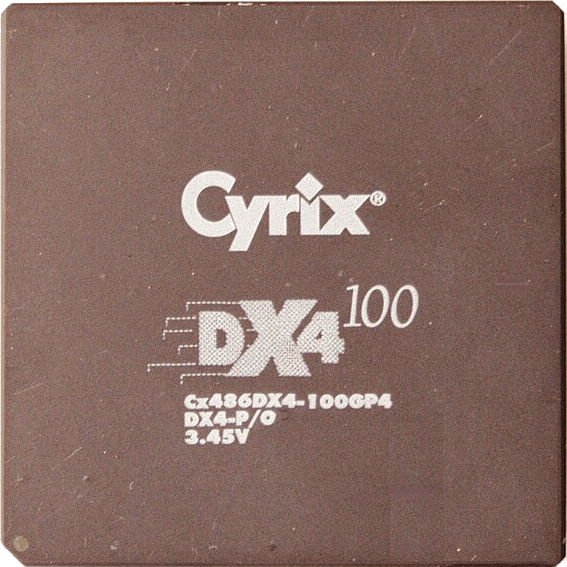It should be reserved for sex toys.
Just saying.
What are you doing step-LAN?
Please don’t use the duplex again.
I used to wonder why porn sites aren’t required to use ‘.cum’ instead of ‘.com’…
The original 3, “.cum”, “.nut”, and “.orgasm”.
Ah yes, the golden
showerage of the web.
some sex toys are external
Then they go on .external, obviously.
Its just a redirect loop from .internal to .external and back.
man mount
My network is .milkme and I have nipples… will they approve it?
You can milk anything with nipples!
Acronyms, initialisms, abbreviations, contractions, and other phrases which expand to something larger, that I’ve seen in this thread:
Fewer Letters More Letters CA (SSL) Certificate Authority HTTP Hypertext Transfer Protocol, the Web HTTPS HTTP over SSL SSL Secure Sockets Layer, for transparent encryption VPN Virtual Private Network
[Thread #910 for this sub, first seen 8th Aug 2024, 09:05] [FAQ] [Full list] [Contact] [Source code]
I personally use .nexus for my network.
routerlogin.net how I do not miss you
It would have been nice if they came up with something shorter like .lan.
Oh, that’s LAN - I thought you’d put ian and I was trying to get the joke. Stupid sans-serif fonts.
First pictures of him sleeping now he has a TLD
Use it anyway.
You go to networking jail for that.
Shit, let’s hope the ICANN cops don’t find me out then… I’ve been using it for years!
“I hereby sentence you to two years on your own VLAN with no gateway”
“Please Mr. Router, mercy!”
iptables -I APPEALS -j DROP
418
Error 418
Lowercase .lan uppercase .LAN…
Straight to jail
Next up!
ICANN approves use of
.awesome-selfhosteddomain for your networkMissed the opportunity for
.myshit.We use .lh, short for localhost. For local network services I use service discovery and .local. And for internal stuff we just use a subdomain of our domain.
Why do I care what ICANN says I can do on my own network? It’s my network, I do what I want.
Try using .com for your internal network and watch the problems arise. Their choice to reserve .internal helps people avoid fqdn collisions.
Well as long as the TLD isn’t used by anyone it should work internally regardless of what ICANN says, especially if I add it to etc/hosts
German router and network products company AVM learned the hard way that this is a bad idea. They use fritz.box for their router interface page and it was great until tld .box became publicly available and somebody registered fritz.box.
Having a reserved local/internal only tld is really great to prevent such issues.
I agree that this is a good idea, but I wanted to add that if someone owns a domain already, they can also use that internally without issue.
If you own a domain and use Let’s Encrypt for a star cert, you can have nice, well secured internal applications on your network with trusted certificates.
You don’t even need a star cert… The DNS challenge works for that use case as well.
I agree, if you’re putting your internal domain names into the public DNS you do not need a star cert.
No, you don’t need to do that.
That is great when using only RFC 1918 IPv4 addresses in the network, but as soon as IPv6 is added to the mix all those internal only network resources can becomes easy publicly available and announced. Yes, this can be prevented with firewalling but it should be considered.
Sure, you can do whatever you want. You could even use non-rfc1918 addresses and nobody can stop you. It’s just not always a great idea for your own network’s functionality and security. You can use an unregistered TLD if you want, but it’s worth knowing that when people and companies did that in the past, and the TLD was later registered, things didn’t turn out well for them. You wouldn’t expect .foo to be a TLD, right? And it wasn’t, until it was.
Ah good point. I guess a future-proofed guarantee that the domain will never be used externally would be easier to use than trying to somehow configure my DNS to never update specific addresses.
If you just run a personal private network, then yea pick anything because you can change it fairly easily. Companies should try to stick to things that they know won’t change under them just to avoid issues
Lmfao… you’d be dumber than JD Vance to do that. At least the couch fucker runs a static S3 for his couch fuck porn.
Certain domain names are locally routed only. So if you use internal or local as a tld, you can just assign whatever names you want and your computer won’t go looking out on the internet for them. This means you and I can both have fileserver.local as an address on our respective network without conflicting. It’s the URI equivalent of 192.168.0.0/16.
Interesting that you should use “.local” as an example, as that one’s extra special, aka Multicast DNS
The value of the DNS is that we all use the same one. You can declare independence, but you’d lose out on that value.
the only losers in this situation are people that are squatting on my rightfully pirated domain names!
YouCANN do anything you want?
Browsers barf at non https now. What are we supposed to do about certificates?
If you mean properly signed certificates (as opposed to self-signed) you’ll need a domain name, and you’ll need your LAN DNS server to resolve a made-up subdomain like
lan.domain.com. With that you can get a wildcard Let’s Encrypt certificate for*.lan.domain.comand all yourhttps://whatever.lan.domain.comURLs will work normally in any browser (for as long as you’re on the LAN).Right, main point of my comment is that .internal is harder to use that it immediately sounds. I don’t even know how to install a new CA root into Android Firefox. Maybe there is a way to do it, but it is pretty limited compared to the desktop version.
You can’t install a root CA in Firefox for android.
You have to install the cert in android and set Firefox to use the android truststore.
You have to go in Firefox settings>about Firefox and tap the Firefox logo for a few times. You then have a hidden menu where you can set Firefox to not use its internal trust store.
You then have to live with a permanent warning in androids quick setting that your traffic might be captured because of the root ca you installed.
It does work, but it sucks.
You do not have to install a root CA if you use let’s encrypt, their root certificate is trusted by any system and your requested wildcard Certificate is trusted via chain of trust
That’s if you have a regular domain instead of.internal unless I’m mixing something. Topic of thread is .internal as if it were something new. Using a regular domain and public CA has always been possible.
deleted by creator
No one is saying it is their job.
Merely that using a TLD like .internal requires some consideration regarding ssl certificates.
deleted by creator
Because people can discuss whatever they like?
If you don’t like it just down vote it.
This is not a new problem, .internal is just a new gimmick but people have been using .lan and whatnot for ages.
Certificates are a web-specific problem but there’s more to intranets than HTTPS. All devices on my network get a .lan name but not all of them run a web app.
You can set up your own CA, sign certs and distribute the root to every one of your devices if you really wanted to.
Yeah I know about that, I’ve done it. It’s just a PITA to do it even slightly carefully.
That sounds like a bad idea, you would need your CA and your root certs to be completely air gapped for it to be even remotely safe.
What if I told you, businesses routinely do this to their own machines in order to make a deliberate MitM attack to log what their employees do?
In this case, it’d be a really targetted attack to break into their locally hosted server, to steal the CA key, and also install a forced VPN/reroute in order to service up MitM attacks or similar. And to what end? Maybe if you’re a billionaire, I’d suggest not doing this. Otherwise, I’d wonder why you’d (as in the average user) be the target of someone that would need to spend a lot of time and money doing the reconnaissance needed to break in to do anything bad.
I’m talking about home hosting and private keys. Not businesses with people whose full time job is to make sure everything runs fine.
I’m a nobody and I regularly have people/bots testing my router. I’m not monitoring my whole setup yet and if someone gets in I would probably not notice until it’s too late.
So hosting my own CA is a hassle and a security risk I’m not willing to put work into.Ah, you mean they put the cert in a transparent proxy which logs all traffic? Neat idea, I should try it at home
Why?
That’s a rather absolutist claim when you don’t know the orgs threat model.
For self hosting at least, having your own CA is a pain in the ass to make sure everything is safe and that nobody except you has access to your CA root key.
I’m not saying it’s not doable, but it’s definitely a lot of work and potentially a big security risk if you’re not 100% certain of what you’re doing.No worse than protecting your ssh key. Just keep it somewhere safe.
Just use only VPN to access your services behind the reverse proxy, if you want prevent unauthorised connections.
CA certificates are not here to prevent someone accessing a site, they are here, so that you can be sure, that the server you are talking to is really the one belonging to the domain you entered and to establish a tunnel in order to send the API calls (html, css, javascript etc.) and answers encrypted.
That’s the problem, if anyone somehow gets your root CA key, your encryption is pretty much gone and they can sign whatever they want with your CA.
It’s a lot of work to make sure it’s safe in a home setup.You can just issue new certificates one per year, and otherwise keep your personal root CA encrypted. If someone is into your system to the point they can get the key as you use it, there are bigger things to worry about than them impersonating your own services to you.
As opposed to what, the domain certificate? Which can’t be air-gapped because it needs to be used by services and reverse proxies.
Nothing, this is not about that.
This change gives you the guarantee that
.internaldomains will never be registered officially, so you can use them without the risk of your stuff breaking should ICANN ever decide to make whatever TLD you’re using an official TLD.That scenario has happened in the past, for example for users of FR!TZBox routers which use
fritz.box..boxbecame available for purchase and someone boughtfritz.box, which broke browser UIs. This could’ve even been used maliciously, but thankfully it wasn’t.Accept them
Quite literally my first thought. Great, but I can’t issue certs against that.
One of the major reasons I have a domain name is so that I can issue certs that just work against any and all devices. For resources on my network. Home or work, some thing.
To folks recommending a private CA, that’s a quick way to some serious frustration. For some arguably good reasons. On some devices I could easily add a CA to, others are annoying or downright bullshit, and yet others are pretty much impossible. Then that last set that’s the most persnickety, guests, where it’d be downright rude!
Being able to issue public certs is easily is great! I don’t use .local much because if it’s worth naming, it’s worth securing.
My Asus router is actually able to get a certificate and use DDNS which is really interesting.
Makes ya wonder what else it’s doing that for…
So you can access your router’s config page without blasting your password in plaintext or getting certificate warnings. It’s an optional feature.
Either ignore like I do or add a self signed cert to trusted root and use that for your services. Will work fine unless you’re letting external folks access your self hosted stuff.
I found options like .local and now .internal way too long for my private stuff. So I managed to get a two-letter domain from some obscure TLD and with Cloudflare as DNS I can use Caddy to get Let’s Encrypt certs for hosts that resolve to 10.0.0.0/8 IPs. Caddy has plugins for other DNS providers, if you don’t want to go with Cloudflare.
Might be an idea to not use any public A records and just use it for cert issuance, and Stick with private resolvers for private use.
It’s a domain with hosts that all resolve to private IP addresses. I don’t care if someone manages to see hosts like vaultwarden, cloud, docs or photos through enumeration if they all resolve to 10.0.0.0/8 addresses. Setting up a private resolver and private PKI is just too much of a bother.
@solrize @thehatfox get a free wildcard cert for your domain and use it just like any other. nothing new, nothing different. I have those running on LAN-only hosts behind a firewall and NAT with no port punching or UpNP or any ingress possible.
if you don’t want to run a private CA with automated cert distribution (also simple with ansible or a few tens of LOC in shell or python), the LetsEncrypt is trivial and costs nothing – still requires one to load the cert and key onto a server though, which is 2/3 of the work vs private CA cert management.
How do you propose to get LetsEncrypt to offer you a certificate for a domain name you do not and cannot control?
@JackbyDev Why would that be a question at all? Buy a domain name and take care of your dns records.
that’s an odd way to say that you don’t own any domains. that’s step one, but does it even need to be said?
You cannot buy .internal domains. That’s my point.
Private CA is the only way for donations which cannot be resolved in the Internet
Maybe browsers could be configured to automatically accept the first certificate they see for a given .internal domain, and then raise a warning if it ever changes, probably with a special banner to teach the user what an .internal name means the first time they see one
Took long enough
That’s good, I never liked the clunky
.home.arpadomain.Well, I just realized I completely goofed, because I went with .arpa instead of .home.arpa, due to what was surely not my own failings.
So I guess I’m going to be changing my home’s domain anyway.
I guess no one offered anything for .internal
Thanks but I hardly needed anyone permission to not use that. .local still works just fine.
Except when it doesn’t. It can have issues around multicast dns.
I used to use .local but mDNS can get confused, .home has been fine though
I’ve had issues with .local on my Android device. Straight up doesn’t work. I had to change to .lan
Same here, just stumbled across this issue yesterday when I tried to restructure my network to use .local
It just means .internal won’t be relayed out on the internet, as it will be reserved for local only.
Good luck with that. .local is reserved for mDNS calls, and not every OS treats it the same way. Ask me how I know.
Been working fine for me for twenty years or more in a mixed environment.
























